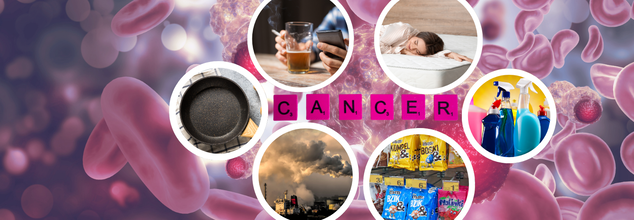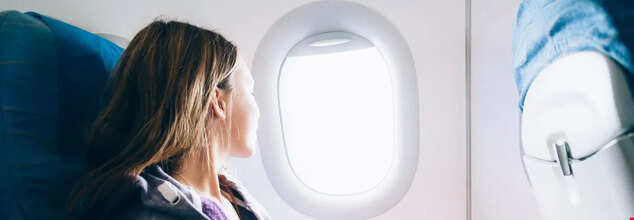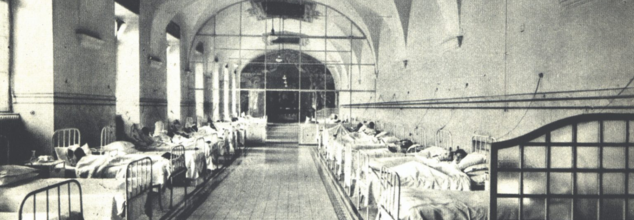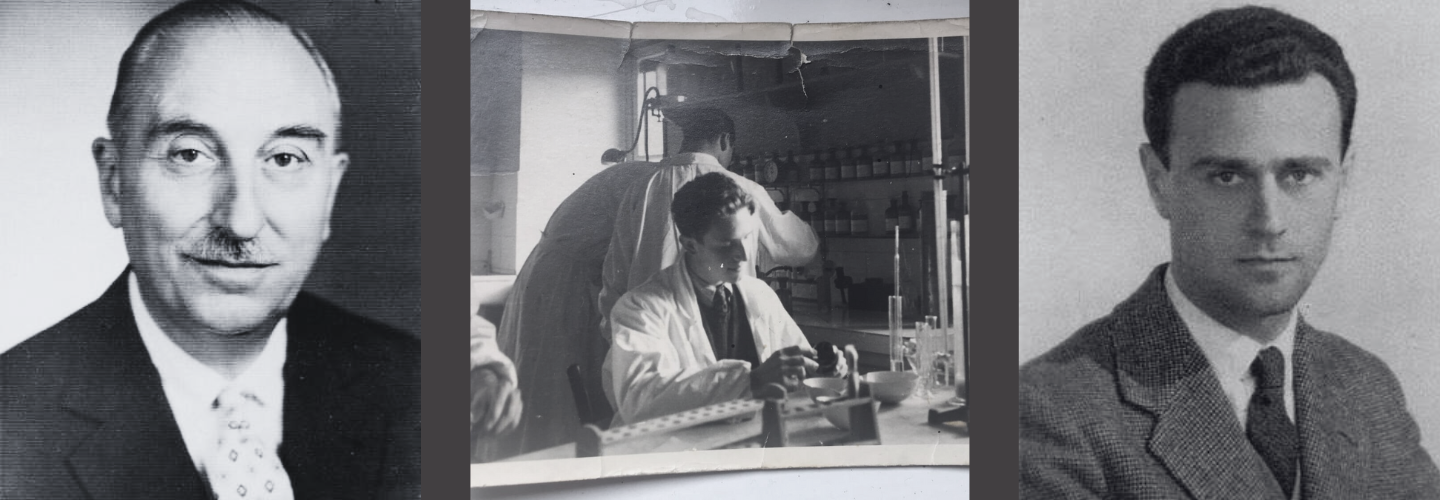- Health Conditions A-Z
- Health & Wellness
- Nutrition
- Fitness
- Health News
- Ayurveda
- Videos
- Medicine A-Z
- Parenting
- Web Stories
Hidden Toxins at Home: Everyday Products That May Be Linked to Cancer

Image Credit: Health and me
After the shocking news by the World Health Organanzation about bacon, ham, and sausages as carcinogens, most people ask is should they look for cancer causing elements in everyday items within their homes that might carry a similar threat. IARC lists 116 substances and activities it considers to be carcinogens, including tobacco and alcohol. Yet there are those who go unconsidered until now lurking in seemingly harmless items found within our houses.
Think about it—how often do you reach for a plastic container to heat up leftovers? Or spray a scented air freshener to keep your home smelling clean? While these everyday habits seem harmless, research suggests that they could expose us to hidden toxins with long-term health risks. The reality is, many products we use without a second thought contain chemicals that have been linked to cancer, hormone disruption, and other serious health concerns.
From the food we eat to the air we breathe indoors, our homes may harbor hidden toxins that contribute to cancer risk. Let's explore some of these risks, the scientific evidence behind them, and how we can take practical steps to minimize exposure.
Silent Culprits At Home Leading the Cancer Causing Elements
Dr. Ajay Mandal, a Gastro-Onco Surgeon, emphasizes that diet plays a critical role in the rising cases of gastrointestinal (GI) cancers, including stomach, colorectal, and pancreatic cancers. He warns against processed and heavily preserved foods, which often contain carcinogenic compounds like nitrates and nitrites found in processed meats. These chemicals, when exposed to high temperatures during cooking, can form nitrosamines—substances strongly linked to cancer.
Furthermore, aspartame, an artificial sweetener used in diet colas, chewing gum, and yogurt, has also been categorized by IARC as "possibly carcinogenic to humans." Though research is continuing on whether this sweetener promotes cancer, taking control of your diet by restricting manufactured additives is a preventive measure against cancer.
What You Can Do
- Eat freshly prepared meals with whole food.
- Avoid processed meat products or artificial sweeteners.
- Instead, use honey or stevia as a natural sweetener.
Chemical Risk of Plastics in Food Storage Items?
Plastics are a problem when it comes to food storage and preparation. Many plastic containers, especially those not labeled BPA-free, contain bisphenol A (BPA) and phthalates—chemicals that can leach into food, especially when heated in the microwave. These substances are endocrine disruptors, which means they interfere with hormones and may increase the risk of hormone-related cancers like breast and prostate cancer.
Historically, people stored food in glass, metal, or clay. Today, convenient choices may expose us to synthetic compounds that might have long-term health consequences, according to Dr. Mandal.
What You Can Do
- Store food in glass or stainless steel.
- Avoid heating food in plastic containers.
- Buy BPA-free or phthalate-free plastics when you can.
How Household Cleaning Products Airborne Aggravate Risk
Many of the commercial cleaning agents contain VOCs, formaldehyde, and ammonia that emit bad fumes indoors. Prolonged exposure to these chemicals has been known to cause respiratory carcinomas, skin diseases, and other health defects.
Studies have revealed that air fresheners, disinfectants, and fabric softeners contain phthalates along with synthetic fragrances that have been linked to hormone disturbance and possible carcinogens.
What You Can Do
- Switch to natural cleaning agents like vinegar, baking soda, and lemon.
- Ventilate when using household cleaners.
- Opt for non-toxic, fragrance-free cleaning products.
Non-Stick Cookware Are Biggest Dangers in the Kitchen
Non-stick cookware is convenient, but it harbors a hidden danger: per- and polyfluoroalkyl substances, or PFAS, commonly known as "forever chemicals." These chemicals have been associated with several cancers, including liver and kidney cancer, as well as immune system suppression.
Over time, scratched or overheated non-stick pans let out toxic fumes, which can be inhaled and absorbed by the food.
What You Can Do
- Use stainless steel, cast iron, or ceramic cookware instead of non-stick.
- Do not overheat non-stick pans; this speeds up the emission of harmful chemicals.
- Replace old and worn-out non-stick cookware with safer ones.
The Dark Side of the Beauty Industry
Parabens, phthalates, and formaldehyde-releasing preservatives have been identified in many shampoos, lotions, and cosmetics. Some of these can penetrate the skin, which raises a person's risk of developing hormone-related cancers.
Other substances include hair dyes and chemical-laden skincare products that, after extended use, can have some hazardous components in them.
What You Can Do
- Select organic, natural, or paraben-free personal care products.
- Read the labels on your ingredient lists and avoid any product that has synthetic fragrances.
- Consider DIY natural skincare alternatives using coconut oil, shea butter, and essential oils.
How Indoor Air Pollution A Silent but Deadly Risk?
Secondhand smoke, radon gas, and household combustion of coal or wood are the most significant contributors to indoor air pollution. According to IARC, exposure to secondhand smoke increases lung cancer risk by 25%. In addition, radon—a radioactive gas that seeps into homes from the ground—is the second leading cause of lung cancer after smoking.
What You Can Do
- Test your home for radon and install radon mitigation systems if needed.
- Use air purifiers to reduce indoor air pollution.
- Avoid smoking indoors and encourage a smoke-free environment.
How to Reduce Your Exposure to Hidden Toxins
Since it is impossible to prevent exposure to every known and unknown carcinogen, the key step to better decisions is being informed. Exposure can be decreased to a marked extent by substituting natural items for food, cookware, cleaning supplies, and personal hygiene.
Dr. Mandal emphasizes the importance of a proactive approach: "Adopting a healthier lifestyle, minimizing exposure to toxins, and making informed choices in our daily lives can go a long way in reducing the cancer burden."
- Minimize processed foods and artificial additives.
- Avoid heating food in plastic containers.
- Use natural cleaning products and safer cookware.
- Choose non-toxic personal care products.
- Improve indoor air quality and test for radon.
As science continues to uncover links between environmental toxins and cancer, making small yet impactful changes today can safeguard our health for the future.
Dr. Ajay Mandal is a Gastro- Onco surgeon at CMRI Kolkata In India.
Why Should You Must Apply Sunscreen Inside A Plane?

Credit: Canva
I love everything about travelling—the journey, the suitcase, and the sense of thrill. But one thing that really leaves me struggling is the condition of my skin after a long flight. The low air pressure and dehydrating air in the plane suck out every ounce of moisture from my skin. However, I recently discovered that what is even more dangerous is its exposure to harmful ultraviolet (UV) rays from the sun. What a lot of people don't know is that these harmful UV rays affect your skin even more when you are up there, at a higher altitude.
Therefore, health experts have warned that you should always wear sunscreen while onboard a plane. Moreover, wearing a relevant Sun Protection Factor (SPF) is especially important if you get a window seat rather than an aisle seat. Elizabeth Japal, from The Derma Lab, emphasises that many people do not realise that UV exposure actually increases as we move up in altitude, and aeroplane windows do not block all the UVA rays, which are the primary cause of premature skin ageing. "You’re essentially sitting next to a magnified sun bed, especially in the window seat," she told a leading media house.
This, combined with the low humidity of the cabin, makes your skin vulnerable to dehydration, dullness, and damage. "It's not just about how you look stepping off the plane—regular exposure to this kind of environment can really take a toll on skin health over time." The experts have encouraged people to prep their skin before travelling, whether you are flying short or long-haul. And yes, you still need to wear SPF even if it's cloudy and grey.
Urging people to prep before they step foot in the airport, Elizabeth says that this applies to everyone, whether you are flying short or long-haul. And yes, you still need to wear SPF even if it's cloudy and grey.
So, What Should We Do?
Dr Japal and other dermatologists suggest that you must clean, hyderate and apply a proper sunscreen before catching that flight. Here are 4 steps that you must follow:
1. Cleanse Properly Before Flying
In her number one rule, Dr Japal urges people to cleanse before flying. “Starting with clean skin is essential. Your face will already be exposed to the drying effects of cabin air—leftover makeup, SPF, or pollution will only clog pores and contribute to inflammation,' she told a leading media website.
2. Hydrate Your Skin
Both before and during the flight, you should spritz some mist on your face for hydration. The recycled air on planes can sap your skin of moisture within minutes. Doing this throughout the flight helps prevent dehydration and delivers an instant glow.
3. Hydrating Serum
Serums are your skin's drink of water. Layering a serum underneath your moisturiser maximises hydration while boosting antioxidant protection.
What Was The Pseudo-Tuberculosis Like 'Syndrome K' Saved Thousand Lives During World War II?

Fatebenefratelli Hospital's "Syndrome K" ward, 1944. (SyndromeK.com)
Have you ever heard of a disease so cruel that I haunts the oppressors? Maybe not. But such a disease, or a fake on exists.
Fear of disease has long haunted humanity. The reasons are many, form devastation of the Black Plague to the slow unraveling of rabies' mysteries, contagious illness offers with it dread, suspicion and isolation.
However, during the World War II, a trio of Italian doctors used this universal fear to not harm, but actually to protect. It was in 1943, when the trip created a fictional ailment known as Syndrome K. This was a fake disease invented that saved Jews from Nazi persecution.
The Invention of Syndrome K

The disease was entirely fabricated by three Italian physicians: Dr Adriano Ossicini, Dr. Giovanni Borromeo, and Dr. Vittorio Emanuele Sacerdoti.
They all worked at the Fatebenefratelli Hospital, a Catholic facility located on Tiber Island in the heart of Rome, these men developed Syndrome K as a disguise for Jewish patients fleeing Nazi capture.
The ruse began after the fall of Mussolini in 1943, when German forces occupied Italy. Jews in Rome, especially those who lived in Jewish ghetto faced arrest and deportation and were aware that Nazis were terrified of infectious diseases, especially tuberculosis. The doctors thus devised Syndrome K, which they described as a deadly, highly contagious illness and classified Jewish patients as infected. The doctors placed them in quarantine wards that Nazi soldiers would be afraid to enter.
The name Syndrome K was deliberately ambiguous and misleading. The "K" was thought to hint at Koch's disease, which is another name for tuberculosis. Ossicini later admitted that the letter also referenced high-ranking Nazis: Albert Kesselring and Herbert Kappler, who were leading the persecution of Roman Jews.
Misleading Symptoms Specifically Designed To Scare
For the ruse to be effective, Syndrome K had to sound convincingly terrifying. The doctors described it as a neurological disorder with symptoms ranging from violent coughing and seizures to paralysis and eventual death. The fictional disease was said to be extremely contagious, untreatable, and fatal.
Patients were instructed to feign symptoms if Nazis entered the hospital—loud, phlegmy coughs, labored breathing, and an appearance of extreme frailty. The illusion was so effective that even when German officers came to search the hospital, they quickly turned away after hearing the hacking coughs and being warned of a “mysterious and incurable” illness.
A Life-saving Deception
The success of the Syndrome K ruse depended on complete secrecy and cooperation. Staff at the hospital were informed of the plan and briefed on how to maintain the illusion. Jewish patients in hiding knew to play their roles. When Nazis arrived, the hospital’s quarantine ward, full of the “infected,” deterred even the most determined soldiers.
While one Nazi search did tragically result in the discovery and deportation of five Jewish refugees, the overall plan was remarkably successful. Historians estimate that around 100 Jewish individuals were saved through the invention and implementation of Syndrome K.
To further the deception, the hospital issued fake death certificates for refugees who were later smuggled out of the country or relocated to safer areas. Each certificate listed Syndrome K as the cause of death, reinforcing the myth of the disease.
All three doctors survived the war, and their courageous deceit has since been recognized around the world. In 2016, Fatebenefratelli Hospital was honored as a “House of Life” by the Raoul Wallenberg Foundation, recognizing sites that sheltered Jews during the Holocaust. Dr. Giovanni Borromeo was also named Righteous Among the Nations by Yad Vashem, Israel’s Holocaust memorial authority.
Alcohol-Related Cancer Deaths Double in U.S. Over 30 Years

Credits: Canva
A new study which is yet to be published in a peer-reviewed journal, which will be presented at the American Society of Clinical Oncology's annual meeting next week found that cancer deaths related to alcohol use in the United States have more than doubled in the last 30 years.
The number rose from under 12,000 in 1990 to over 23,000 in 2021. Men and people aged 55 and older are the most affected.
Alcohol And Cancer Risk
The research team analyzed national death data from 1990 to 2021 to understand alcohol's role in cancer mortality. As per Dr Chinmay Jani, who is the lead author of the study and a clinical fellow in haematology and oncology at the Sylvester Comprehensive Cancer Center, "We already know other risk factors, such as tobacco, for cancer. However, it is very important to know that alcohol is also a risk factor and can be a carcinogen in many different cancers,” as reported in ABC News.
Dr. Jani emphasized that even small amounts of alcohol can pose a risk. “It doesn’t necessarily mean that you are drinking every day,” he added, highlighting the importance of understanding the cumulative effects of alcohol over time.
Seven Types Of Cancers Were Examined
The researchers focused on seven types of cancer linked to alcohol use: breast, liver, colorectal, throat, voice box, mouth, and esophageal. While alcohol does not cause every case of these cancers, it is a known contributing factor in a significant portion of them.
In 1991, alcohol-related cancer deaths accounted for 2.5% of all cancer deaths in men and 1.46% in women. By 2021, these figures rose to 4.2% in men and 1.85% in women. The increase in men was particularly striking — a 56% rise in alcohol-related cancer deaths — while for women, the increase was nearly 8%, according to NBC News.
Cancer Affecting Adults And Men Disproportionately
Dr Jani also noted a gender gap in the findings. He said, “It was not surprising that it was higher in men, but it was certainly surprising how much higher it was in men versus women.”
As per the data, cancer deaths related to alcohol were more common in men and individuals aged 55 and over. In men, within this age group, the death rose by more than 1% every year from 2001 to 2021.
“The carcinogenic effect probably isn’t affecting you right away in your younger age,” Dr. Jani explained. “But as you continue to drink as you age, this carcinogen has an accumulative effect on the body.”
Most Deadly Cancer
Among the seven cancers linked to alcohol, liver, colorectal, and esophageal cancers were the deadliest overall in 2021. For men, liver cancer was the leading cause of alcohol-related cancer deaths. For women, breast cancer ranked highest.
The findings underscore the growing public health concern around alcohol consumption and the urgent need for greater awareness about its long-term health effects.
© 2024 Bennett, Coleman & Company Limited

